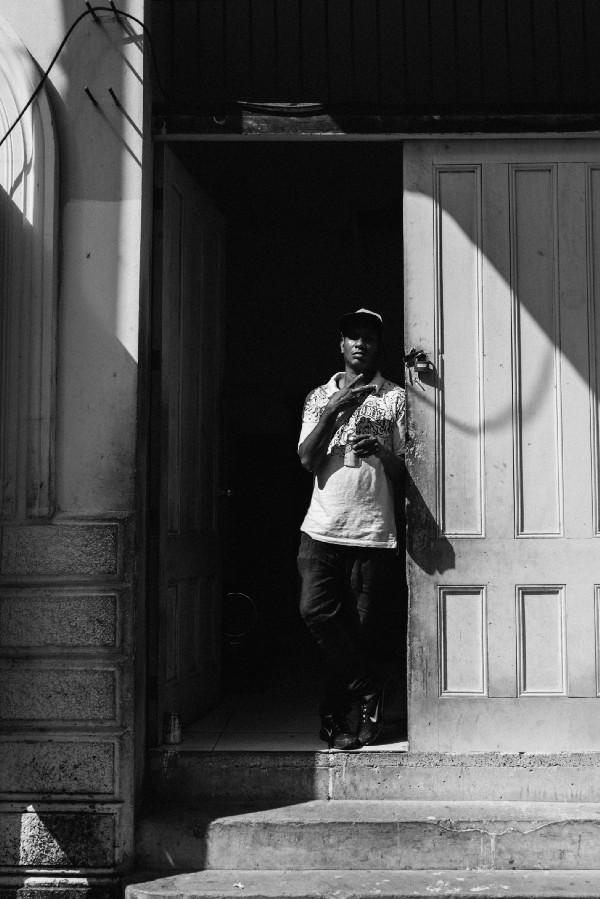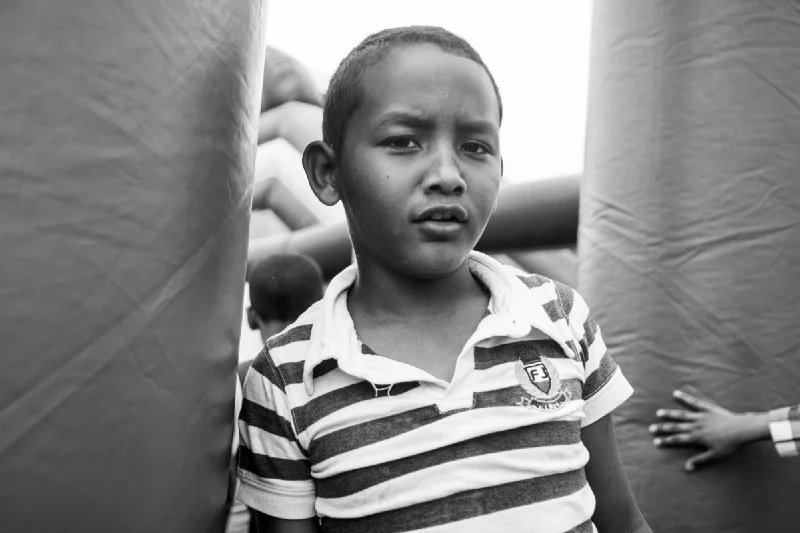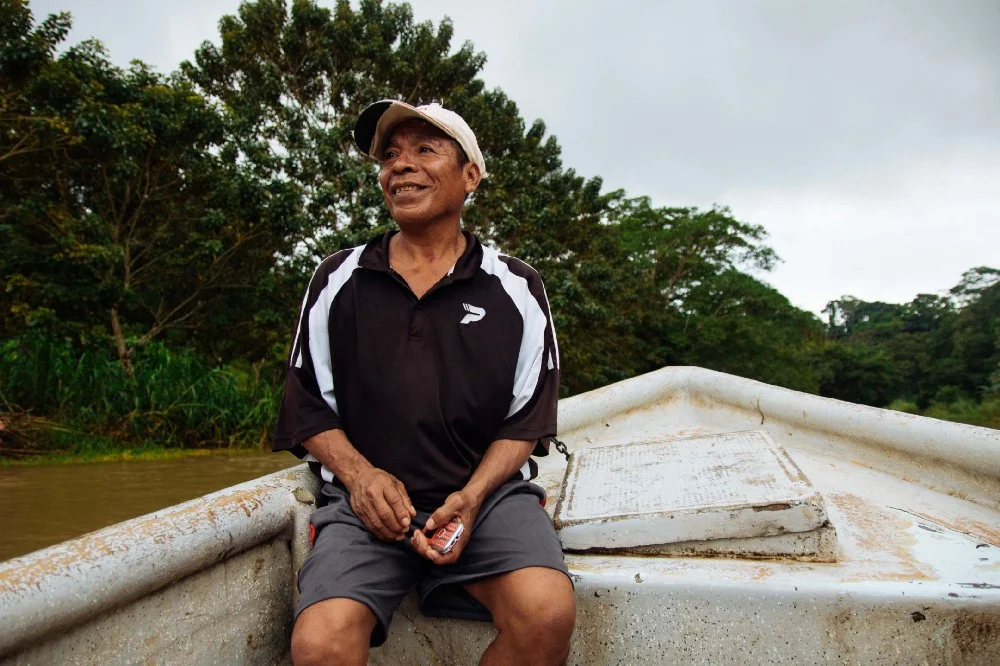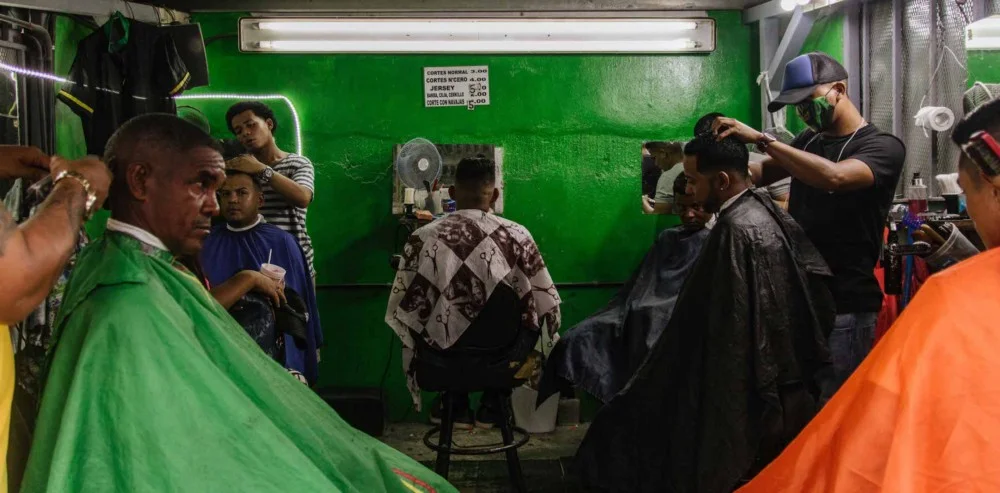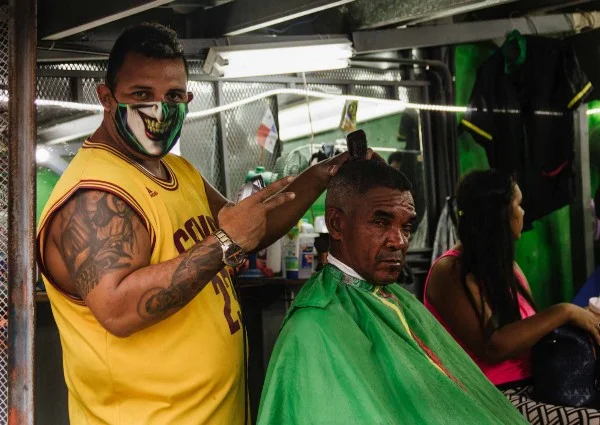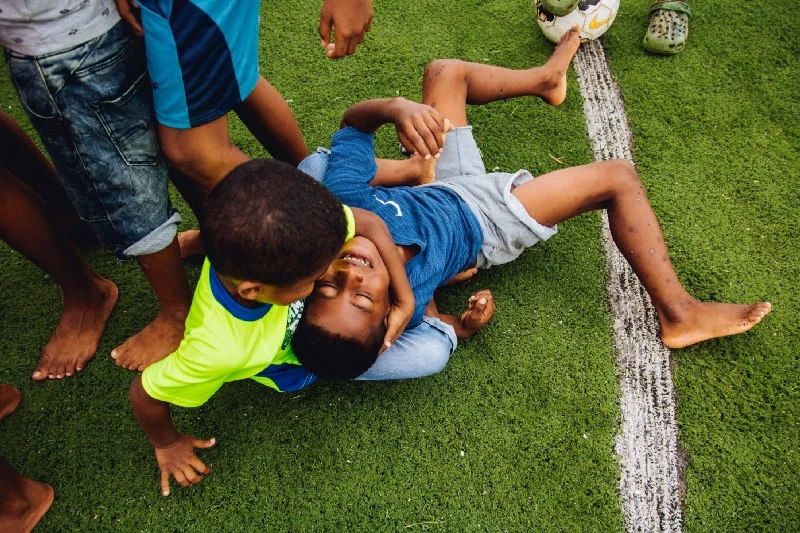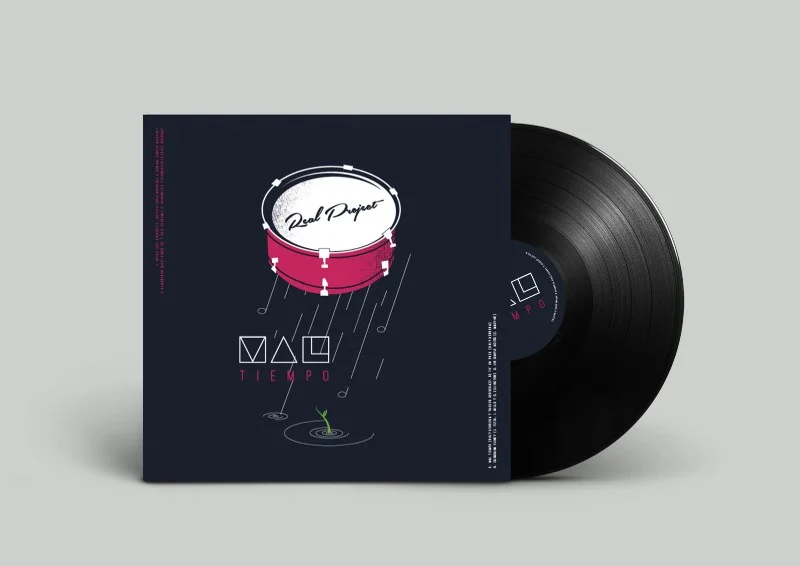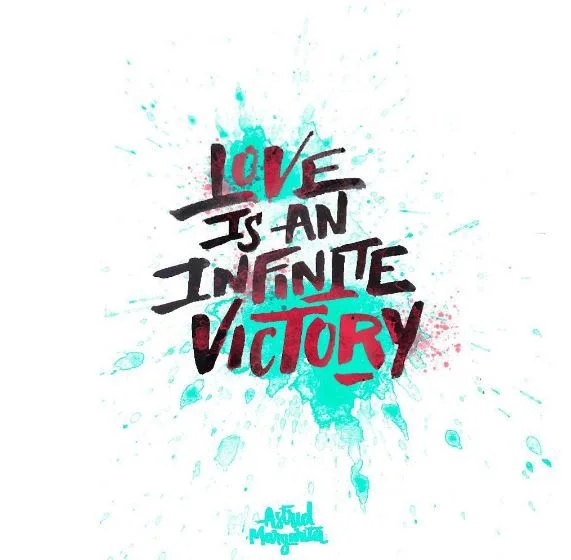‘A Million Shades of Blue and Grey’
An Interview with Panama-based Photographer María Fernanda González
The black-and-white and colourful photos by Panamanian photographer María Fernanda González are riveting and usually tell the stories of human beings. To learn about her and her work, I asked María Fernanda about Panamanian traditions as well as her way of thinking of and approaches to art.
Let’s start with the very beginning! How did you get into photography, film-making and art direction?
I’ve been taking photos ever since I can remember. I have this vague memory of using my dad’s point and shoot Olympus when I was like seven years old. I used to get excited when I saw the film printed, even if 90 per cent of the photos had a blurry finger in the middle. I started taking it more seriously, as a hobby, when I was in high school, but it wasn’t until I was already a freshman at university that I decided I wanted to pursue it as a career.
During that time, I also decided that I wanted to study film, but I really don’t know how that happened. I just knew I wanted to go to New York someday and become a film-maker. I’ve never been passionate about the history of film, director’s names or anything like that; I can’t talk about the work of Christopher Nolan or the incredible aesthetic of Wes Anderson’s films. That is neither what interests me nor what I’m educated in. This struck me and I settled for not pursuing that passion. There had been thoughts in my young, naïve head: I thought if I wasn’t into popular blockbusters or indie films, then perhaps it was not really what I liked. However, later I understood that you could enjoy different aspects of one art or thing and still be able to turn that into a passion. In my case, I love documentary films. It’s not the most mainstream format, probably that’s why I didn’t see it as a potential career back then. I wasn’t as exposed to it as I am now.
As far as art direction is concerned, I’m just getting started by creating still-life compositions. It’s a new path and it feels funky sometimes, mixing that with my street/documentary background in photography. I like to think of myself as an extremist and that’s probably reflected in the paths I take with my work: make it either too colourful or completely black and white.
You say you’re not educated in film history. What did you study then and how?
I studied psychology at university for three years, and then I switched to audiovisual production. Everything I’ve learned as far as photography or art in general is concerned, I’ve learned through just doing it and teaching myself how to create things. The Internet is indeed a beautiful thing.
Panama is in the news from time to time, especially because of its history. But what should we all know about the traditions of Panamanian photography, film-making, art & design?
I think the arts in general are very rich in my country. They’re influenced by cultures and techniques from all over the world. The industry is still very underdeveloped, in film-making at least. It’s grown a lot in the past couple of years, for example with festivals. But I believe our biggest issue is that we touch upon the same topics over and over again. It might be an unpopular opinion, but talking about the Panama Canal or the U.S. invasion have been reflected upon too many times in cinema.
In addition to that, we think too much about the art and not enough about the business side of things. Sometimes, if you want to be seen, you need to create content with the audience in mind, not just because you want to do it for your own sake. In general, the Panamanians are very vivid storytellers, we have so much potential to create incredible and captivating stories – in any format. We’re just lacking that extra motivation to do it.
What position do you think Panamanian photography, film-making, art & design hold in the context of Central & South America and in the world?
I think we’re newborns. The growth experienced in the last couple of years is promising, but art is still not available to the general public. The ones who create and go to art-related events are the same people over and over again; the same artists and most of them are, in general, wealthy humans. Other people do not really enjoy that huge exposure. I don’t have an extensive knowledge of the arts and culture regarding the region or how it works in other countries, but I do believe that we still lack open, free, inclusive spaces to showcase and produce art.
Some of the most recognized artists also usually focus on topics related to Panamanian culture. This is good because they tell Panamanian stories to the world, but they can’t really convey a message to foreigners. They are not able to understand the culture-specific stories, and therefore the artworks don’t sell, travel and most often are just not requested at all. As I said before, we always touch upon the same topics; there are a million movies and photo series on the invasion. It was indeed an important historical moment, and the wound is still very open, but it’s time to move on in terms of art production.
What do you think the biggest challenges and greatest opportunities creative professionals in the region have?
I attended a Sony Conference where they talked about exposing photographic work around the world, partnering with galleries, so on and so forth. They basically discussed the business aspect of photography. One of the presenters said something that struck me: namely, in order to get your work exhibited in well-known galleries and show them around the world, you need to create content that goes beyond borders. You might call it international content. In other words, you need to create content that people from other parts of the world can empathize with. Well, it is foolish to think that, isn’t? At least in terms of photography, since it is a visual medium that can be easily understood by anyone anywhere.
However, the reality of each region, country, community, etc. is real to only the people living there. Our biggest issue, I believe, is creating global content. From what I’ve seen, Latino artists focus a lot on creating art from their region’s perspective to people living here. So it is indeed challenging to getting exposure outside the country and/or region. I’d say that the greatest opportunity is that we still have a lot of room for creating anything we want. Do you want to create a magazine on art? Do it! There is definitely an audience for it, and it’s not as frequently seen as if you lived in Los Angeles, for example. The market isn’t as crowded either. Latin America as a whole, even with its individual differences, has one of the richest cultures. There’s so much to be seen and told from the unique perspective of a Latino. There’s no reason for us to copy international standards when we can create in our own way. But I believe we still have low self-esteem…
You work freelance. I’m wondering how difficult it was to make the decision to be independent and work as a freelancer?
I’ve never really had a formal job. I worked at a small agency for about three months and I wanted to kill myself. I struggle a lot with the decision of not wanting to work for a company, because being a freelancer comes with a lot of responsibility and hard work. At this point, it is still not a stable source of income, but I do it because I can’t work for someone for the sake of having money and be unhappy and don’t have the time to create. I’m not at all up to being a starving artist, though. I have a strong business mindset, but it’s definitely tough. It’s not as romantic as people may think it is, but it’s far more gratifying knowing that you can spend the whole day shooting and coming up with projects than having to sit from 8 to 5 at a desk doing God knows what boring task. I guess it depends on the job as well, but I prefer to be a freelance. Every time I think about going to interviews and finding a job just because I need the money, I try to sit back, take a deep breath and tell myself that everything will be OK.
You realise commercial and personal projects, too. What are the differences and similarities regarding your approach towards the projects commissioned by clients or when you want to fulfil your artistic endeavours?
It’s been a ride figuring out my style and how to mix that with what a client may ask for. Sometimes I struggle when editing for a commercial job because I think it needs to have a particular style, more like something that makes it advertising, but afterwards I sit back and think… Maybe if they’ve hired me, it’s because they like my style, so I should just do that. If they want advertising, they can go and hire an advertising photographer. It’s hard to recognize that your own work and style is worth buying.
What aspect of your work do you enjoy the most, and why?
I’ve been thinking of myself as more of an artist lately; I’ve expanded my mind to so many things. Ever since my last series, I realised the beauty of conceptual art. I love documentary photography, but it doesn’t really allow me to showcase my ideas and views of the world. With conceptual art, I can say whatever I want in any way I want. I have lots of opinions, but I’m strongly against conflict and I never really want to voice them. I’m too self-conscious and not up for the debate. Art is a medium for that.
You take photographs and make videos (short documentaries). What limitations did you encounter while working with these formats?
I love making videos, but I struggle because I’m a loner. I like to do most things by myself, but then you’re hit with this reality that doing this alone is far more difficult. Being a solo film-maker is not an easy task. Video production mostly requires teamwork, and that’s been the most difficult part for me.
You do a lot of human stories such as the project The Sail Maker. How do you usually do projects like this?
I approach people. It’s kind of an exercise to get out of my comfort zone because I’m really, really introverted and self-conscious. So talking to strangers is usually a no-go, but whenever something catches my eye or interests me, I figure the worst thing that can happen is that they say no. So I just go and say: Hi, I’m María Fernanda and I’m a photographer, can I take a photo of you? It’s usually an OK conversation starter and people start asking all kinds of questions. Suddenly, I have tons of photos and a nice story that I can build on with my images.
Please talk briefly about the project PANAMEÑITIES. How did you develop it?
Panameñities is a visual exploration of Panamanian slang, using the literal figure of speech to represent them. I took the phrases and turned them into still life, with some short stories to contextualize the phrase (in Spanish). I’m not very patriotic or all about my country but my work has been going in that direction lately. It’s kind of ironic! I tried to experiment with colours and set-ups instead of spontaneity and black and white, because I love art direction and the works of Jessica Walsh – just to mention one art director. So I thought I’d give it a try.
In contrast with this project, you’ve taken many photos in black and white. How do you decide on whether black and white or colours are the most appropriate for a particular project?
It’s usually a very aesthetical decision. Contrary to what most people do, if there are a big variety of colours in the photos (such as dresses, skin colours, busy backgrounds), I tend to go with black and white because it distracts me less. I don’t like busy images. Most people would actually want to bring up the colours to make them pop, but it’s the opposite for me. I do colours if the image in particular evokes the feeling of happiness or there is a strong contrast between colours on the image. I try to match the edit with the feeling it evokes in me.
How would you describe yourself with colours?
A million shades of blue and grey.
What are you currently working on? What are your plans?
I’m going to start expanding Panameñities to other formats. I think it has a lot of potentials. It had a great response in the local scene – more than my past projects. So I think taking it to the masses could be a thing. I’m also working on expanding my knowledge of video production. I’d love to work on some music videos, because it’s always been something I’ve wanted to do but have never got to do it. Just go out and shoot way more. In general, I’m currently working more and more with video production.


